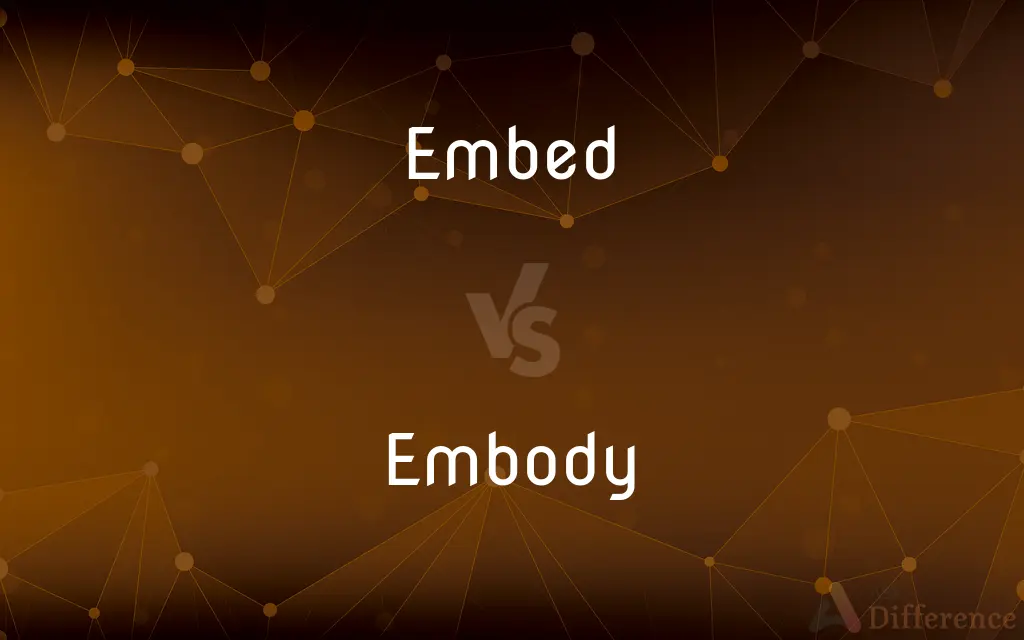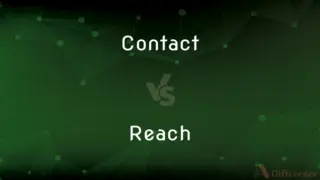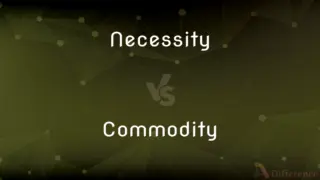Embed vs. Embody — What's the Difference?
By Fiza Rafique & Urooj Arif — Updated on April 5, 2024
Embed emphasizes integration or insertion within a context, whereas embody focuses on representing or expressing ideas or qualities tangibly.

Difference Between Embed and Embody
Table of Contents
ADVERTISEMENT
Key Differences
Embed is often used to describe the act of placing something firmly within another substance or context so that it becomes an integral part of the whole. This term is widely applicable, ranging from the literal, such as embedding a nail in wood, to the figurative, like embedding principles in a philosophy. Embody, on the other hand, goes beyond mere integration. It involves giving concrete form to something abstract, such as values, ideas, or qualities. When something embodies a concept, it becomes a physical or manifest example of that idea, making it tangible and relatable.
While embedding suggests insertion or incorporation into a larger context, embodying suggests a manifestation or physical representation of an idea or quality. An artist can embed symbols in their work, subtly incorporating them into the broader piece, whereas a leader might embody the principles of integrity and courage, serving as a living example of these values.
Embedding often implies a certain level of concealment or incorporation that requires digging or investigation to uncover. For example, a journalist might embed critical information within a story, necessitating a careful read to discover. Conversely, embodying makes the abstract readily observable and understandable through a tangible medium or example.
The process of embedding can be temporary or contingent on the surrounding medium, whereas embodying usually denotes a more permanent or inherent condition. Embedded objects can be removed or may degrade over time, while qualities that are embodied tend to define or persistently characterize the entity in question.
Comparison Chart
Definition
To insert or integrate into a surrounding context or substance.
To represent or express something abstract in a tangible or visible form.
ADVERTISEMENT
Usage in Sentence
"The spy was embedded within the organization for years."
"The statue embodies the spirit of the city's founder."
Scope
Often refers to physical insertion or incorporation.
Generally involves giving form to abstract qualities or ideas.
Visibility
Embedded elements might be hidden or not immediately apparent.
Embodied qualities are usually manifest and observable.
Purpose
Primarily to integrate or insert something within another entity.
To represent, exemplify, or express abstract concepts tangibly.
Compare with Definitions
Embed
To place or fix firmly into another material.
The artist embedded small stones into the sculpture's surface.
Embody
To give a body to a spirit or an abstract concept.
The novel embodies the spirit of the age in which it was written.
Embed
To incorporate closely within a text or context.
The software developer embedded code within the application for added functionality.
Embody
To incorporate or include something comprehensively.
The new law embodies several measures to protect the environment.
Embed
To involve deeply in a particular activity or environment.
The journalist was embedded with the military unit to report on the conflict.
Embody
To manifest or bring into existence.
The community project embodies the collective effort and vision of its members.
Embed
To insert into a surrounding mass.
The surgeon carefully embedded the implant into the tissue.
Embody
To represent or express something in a tangible or visible form.
The monument embodies the courage and sacrifice of the soldiers.
Embed
To include as an integral part.
The curriculum embedded ethical questions within scientific studies.
Embody
To personify or exemplify qualities or ideals.
The leader embodies the values of honesty and integrity.
Embed
To fix firmly in a surrounding mass
Embed a post in concrete.
Fossils embedded in shale.
Embody
To give a bodily form to; incarnate.
Embed
To cause to be an integral part of a surrounding whole
"a minor accuracy embedded in a larger untruth" (Ian Jack).
Embody
To represent in bodily or material form
"As John Adams embodied the old style, Andrew Jackson embodied the new" (Richard Hofstadter).
Embed
(Linguistics)To insert or position (a clause or phrase) within a clause or phrase.
Embody
To make part of a system or whole; incorporate
Laws that embody a people's values.
Embed
(Computers)To insert (a virus, for example) into a software program.
Embody
(transitive) To represent in a physical or concrete form; to incarnate or personify.
As the car salesman approached, wearing a plaid suit and slicked-back hair, he seemed to embody sleaze.
Embed
To assign (a journalist) to travel with a military unit during an armed conflict.
Embody
(transitive) To represent in some other form, such as a code of laws.
The US Constitution aimed to embody the ideals of diverse groups of people, from Puritans to Deists.
The principle was recognized by some of the early Greek philosophers who embodied it in their systems.
Embed
(Biology)To enclose (a specimen) in a supporting material before sectioning for microscopic examination.
Embody
(transitive) To comprise or include as part of a cohesive whole; to be made up of.
Embed
To become embedded
The harpoon struck but did not embed.
Embody
(intransitive) To unite in a body or mass.
Embed
One that is embedded, especially a journalist who is assigned to an active military unit.
Embody
To form into a body; to invest with a body; to collect into a body, a united mass, or a whole; to incorporate; as, to embody one's ideas in a treatise.
Devils embodied and disembodied.
The soul, while it is embodied, can no more be divided from sin.
Embed
(transitive) To lay (something) as in a bed; to lay in surrounding matter; to bed.
To embed something in clay, mortar, or sand
Embody
To unite in a body, a mass, or a collection; to coalesce.
Firmly to embody against this court party.
Embed
To include (something) in surrounding matter.
We wanted to embed our reporter with the Fifth Infantry Division, but the Army would have none of it.
Embody
Represent in bodily form;
He embodies all that is evil wrong with the system
The painting substantiates the feelings of the artist
Embed
To encapsulate within another document or data file.
The instructions showed how to embed a chart from the spreadsheet within the wordprocessor document.
Embody
Represent, as of a character on stage;
Derek Jacobi was Hamlet
Embed
To define a one-to-one function from one set to another so that certain properties of the domain are preserved when considering the image as a subset of the codomain.
The torus can be embedded in .
Embody
Represent or express something abstract in tangible form;
This painting embodies the feelings of the Romantic period
Embed
(journalism) An embedded reporter or journalist, such as a war reporter assigned to and travelling with a military unit, or a political reporter assigned to follow and report on the campaign of a candidate.
Embed
An element of an advertisement, etc. serving as a subliminal message.
Embed
(computing) An item embedded in another document.
Embed
To lay as in a bed; to lay in surrounding matter; to bed; as, to embed a thing in clay, mortar, or sand.
Embed
Fix or set securely or deeply;
He planted a knee in the back of his opponent
The dentist implanted a tooth in the gum
Common Curiosities
Can a person embody ideals?
Yes, a person can embody ideals by personifying or representing them in their actions and character.
What does it mean to embed something?
Embedding involves inserting or integrating something within another substance or context so it becomes part of the whole.
What does it mean when a character embodies a theme in literature?
It means the character personifies or represents the theme, making it more relatable and understandable to the reader through their actions or experiences.
Is embedding a temporary process?
Embedding can be either temporary or permanent, depending on the context and the materials involved.
What is the role of embedding in learning?
Embedding in learning involves integrating knowledge or skills into one's understanding or practice so that they become part of the learner's competency base.
Is embedding always physical?
No, embedding can also be figurative, such as embedding an idea within a narrative or a principle within a philosophy.
What is an example of embedding in technology?
Embedding code within a software application to add functionality or features is a common example in technology.
How does embody differ from embed?
Embody involves giving a tangible form to abstract ideas or qualities, making them physically manifest, whereas embed is about incorporation or insertion into a larger context.
How does one embody a concept?
By personifying, exemplifying, or through creation that makes the concept tangible or visible, such as through art or behavior.
Can ideas be embodied in art?
Yes, art can embody ideas or values, making abstract concepts tangible through visual, auditory, or other sensory forms.
Can a law embody social change?
Yes, a law can embody social change by encapsulating new social norms, values, or priorities in its provisions.
Can an organization embody certain principles?
Yes, an organization can embody principles through its culture, practices, and objectives, making these principles manifest in its operations and identity.
What's the difference between embedding a video and embodying a concept in a video?
Embedding a video involves inserting it into a webpage or document, while embodying a concept in a video means the video represents or visualizes the concept.
How do symbols get embedded in culture?
Symbols are embedded in culture through repeated use, significance, and association with particular meanings or events, becoming part of the cultural identity.
How does architecture embody cultural values?
Architecture embodies cultural values by reflecting and incorporating elements that represent the culture’s aesthetics, principles, and historical context.
Share Your Discovery

Previous Comparison
Contact vs. Reach
Next Comparison
Necessity vs. CommodityAuthor Spotlight
Written by
Fiza RafiqueFiza Rafique is a skilled content writer at AskDifference.com, where she meticulously refines and enhances written pieces. Drawing from her vast editorial expertise, Fiza ensures clarity, accuracy, and precision in every article. Passionate about language, she continually seeks to elevate the quality of content for readers worldwide.
Co-written by
Urooj ArifUrooj is a skilled content writer at Ask Difference, known for her exceptional ability to simplify complex topics into engaging and informative content. With a passion for research and a flair for clear, concise writing, she consistently delivers articles that resonate with our diverse audience.














































